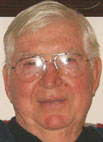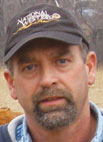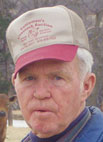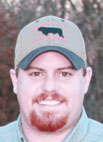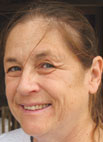The Steps of An Angus Breeder
The Diamond W Angus farm is a five generation farm, bought in 1933 by Gail Weisenbach's grandparents, Tony and Minnie Price. When Jack and Gail Weisenbach were married in 1977; they started out bottle feeding 10 baby calves. They raised commercial cattle until 2004, and then changed to registered Angus cattle.
Living Heritage & History
With the idea of living on the land like generations of self-reliant people in the past lived, Tina Marie Wilcox moved onto her 28 acres of wooded ridge-top near Leslie, Ark. She’s one of the back-to-the-landers who stayed, keeping a connection to her roots. In 2009 she co-authored and published a book with Susan Belsinger, titled "The Creative Herbal Home," a guide for both beginners and more experienced home herbalists. She raises a vegetable and herb garden.
Limousin Seedstock
Having once lived on a farm, when Bob and Joyce Stewart decided in 1987 to move back to Arkansas from Missouri, the decision to come back and go into the cattle business was not hard for them. His parents, John and Unia Stewart bought the family land near Timbo, Ark., in the mid-1940s.
Farming Dad’s Way
The 110 acres making up the home-place property where Mike Crow and his wife Robin live, has been in the family over 100 years. He grew up working alongside his dad, Willard Crow, and his mother Patsy.
On the Tracks to Full-Time Farming
Odell and Evelyn Ray of Berryville, Ark., have lived the city life, as well as the country life. Both of them agree they are blessed to have been able to return to their roots in Carroll County, Ark. Odell was raised very near their present farm, and Evelyn was raised on the edge of town in Berryville. “I went to Kansas City when I was about 20 years old. There were no public jobs around here. So, I left and got a job on the railroad. I worked there almost 40 years,” said Odell.
Adversity and Strength
"The bond that links your true family is not one of blood, but of respect and joy in each other's life.” This quote from Richard Bach instantly springs to mind when you meet the Cruikshank/Kilgore family. This is a family that has been forged in the fires of adversity and has come together through the healing bonds of love. The 300-acre farm was bought 16 years ago by Kim Cruikshank and her husband Marty Kilgore. They built two chicken houses and a dairy barn on the property after clearing pasture. Marty’s untimely death in 2002, in an accident, left Kim with their four children and a large broiler breeder and cattle operation to run. After years of running the farm and raising the kids, Kim met Cory Cruikshank and they were married in 2007. Kim’s daughter’s Kaylee and Alyssa are grown now, but 15-year-old Whitney and 11-year-old Levi are still at home. The love and pride that Cory feels for his stepchildren is palpable when he talks about their achievements and what hard workers that Whitney and Levi are.
Just Ask Her About Her Goats
"We try to do this naturally,” explained Joanna Burgin of Crazy Woman Ranch near Salem, Ark. “Our goats are in the pasture. We want them to live off the brush and the land. We want them to work for us, not the other way around.”
Poultry, Feed and the History of One Family’s Business
"I came to work at the Webb Feed Store on April the twentieth, of 1940, and I have been here ever since,” Fred McKinney said. Hugh Webb opened the feed store in 1936. The feed store is the oldest feed store in continuous operation in Benton County. “I came to work for Mr. Webb in 1940. In 1944 I married the boss’ daughter,” Fred said. “We have been married for 64 years now.” Fred’s son has worked at the feed store with his father all his life. Two of Fred’s grandsons also work with them at the store. Fred’s wife kept the books for the feed store up until the last few years. “We still have all the family over every Sunday for dinner,” Fred said. “We all still go to church together.”
The Singing Cowboy
After his wife and family, Gerald Richardson loves two things: his singing and his cattle. Gerald, a long-time member of the bluegrass and gospel group, Joe Sasser and Friends, has been entertaining in the Ozarks for over 30 years. The group consists of Jimmy Joe Sasser, Nancy Bergeron and Gerald. They are regular performers at the Ozark Folk Center and other bluegrass gatherings. The group performs at volunteer fire departments, schools and other civic organizations, and is loved in the community.
Teamwork Pulls It All Together
Most everyone involved in agriculture today realizes that every part of a family's farm program has to mesh in order to work together like a well-oiled machine, and different enterprises must mutually benefit each other.



